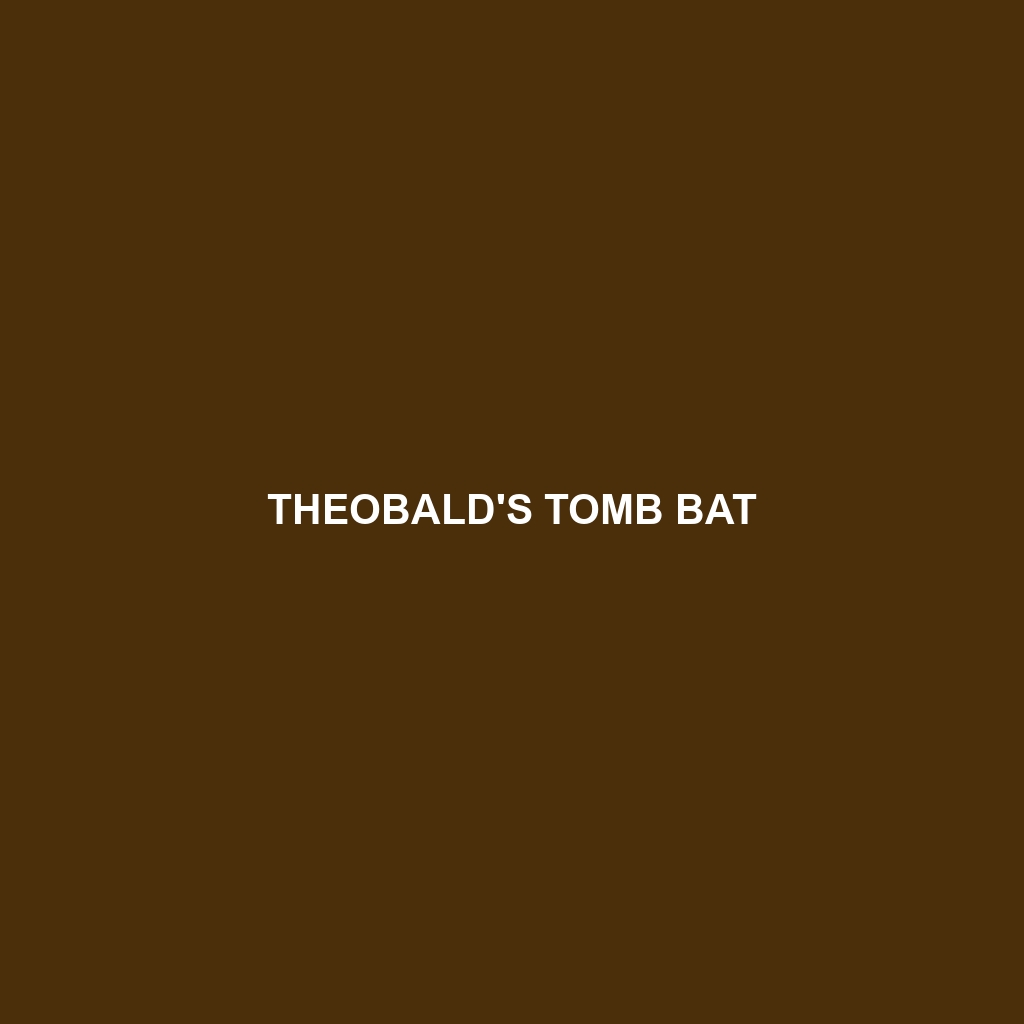Species Description: Egyptian Tomb Bat
Common Name: Egyptian Tomb Bat
Scientific Name:
Habitat
The Egyptian Tomb Bat primarily inhabits regions throughout North Africa, particularly in Egypt, where it can often be found in ancient tombs, caves, and rocky crevices. These bats prefer warm, dry environments that provide suitable roosting sites and protection from predators. They are frequently associated with archaeological sites and human structures, utilizing unique microhabitats created by these historic locations.
Physical Characteristics
Egyptian Tomb Bats are medium-sized bats, typically ranging from 8 to 13 cm in body length with a wingspan of approximately 30 to 40 cm. Their fur exhibits a rich dark brown to grayish color, allowing them to blend seamlessly into their rocky surroundings. One of their most distinctive features is their large ears, which can surpass the length of their head, aiding in echolocation. Their short and robust wings are designed for agile flight in confined spaces, making them adept at navigating through tombs and caves.
Behavior
Known for their nocturnal lifestyle, Egyptian Tomb Bats are often observed roosting in groups during the day and emerging at twilight to forage. They exhibit social behavior, frequently forming colonies that can number in the hundreds. Their echolocation skills are highly developed, enabling them to hunt down insects with remarkable precision. This species has curious habits, such as returning to the same roosting sites for extended periods, which may be linked to their attraction to specific environmental conditions.
Diet
The diet of the Egyptian Tomb Bat primarily consists of insects, particularly nocturnal moths and beetles. They utilize their keen echolocation abilities to detect prey in the dark, efficiently capturing food in mid-flight. These bats play an essential role in controlling insect populations, which highlights their importance in the local ecosystem and contributes to biodiversity.
Reproduction
Egyptian Tomb Bats typically breed once a year, with mating occurring in late summer. The females usually give birth to a single offspring, known as a pup, after a gestation period of approximately 2 months. Maternal care is significant, as mothers nurse their pups for several weeks. It is not uncommon for mothers to form crèches, where multiple mothers will care for their offspring together, thus enhancing pup survival rates.
Conservation Status
The current conservation status of the Egyptian Tomb Bat is listed as vulnerable due to habitat loss and human activities that threaten their roosting sites. Conservation efforts are essential to protect this unique species and their natural habitats, which are increasingly at risk from urban development and climate change.
Interesting Facts
One fascinating fact about the Egyptian Tomb Bat is its historical connection to ancient Egyptian culture, where its roosting sites often coincide with significant archaeological sites. Additionally, they are known to have low flight patterns, which allows them to navigate the narrow confines of tombs and cave systems with ease.
Role in Ecosystem
The Egyptian Tomb Bat plays a crucial role in the ecosystem as a predator of insects, helping to maintain biological control within their habitat. Their interactions with other species, including potential competition for roosting sites and their impact on insect populations, demonstrate their importance in balancing the local food web and maintaining ecological health.
